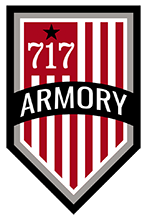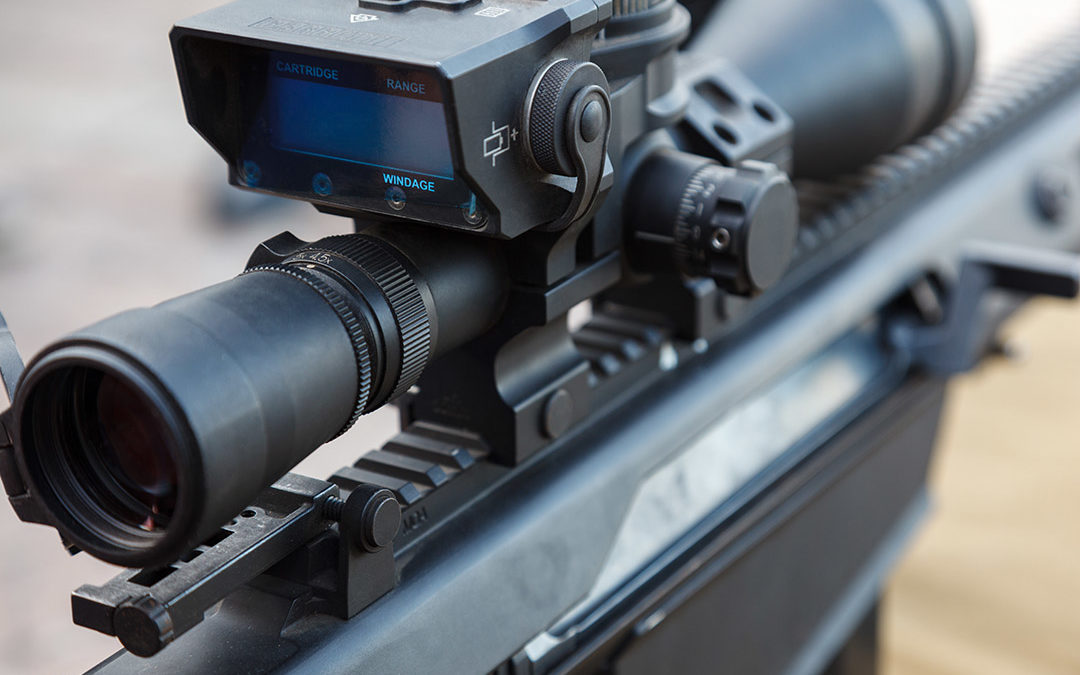There are few products where the adage “you get what you pay for” applies more than with optics.
With many products, like cars, it’s pretty easy to see and feel exactly what you’re paying for. The cornering performance and zero to sixty specs for a 1970 AMC Gremlin are pretty easy to distinguish when you compare them to a Bugatti Veyron. Those two cars are very different in price, but you can make a list a mile long of exactly how the performance differs. I suppose the Gremlin might edge out the Veyron when it comes to gas mileage, the price of an oil change, and ability to blend in at the local landfill. (By the way, it’ll run you about $21,000 for an oil change for the latter, whether you choose synthetic or the cheap stuff.) Other than that, the Veyron is going to claim the checkered flag in every visible category. As a result, whether you believe the Bugatti is worth a cool $2.5 million or not, you can easily understand why it’s a lot more expensive.
When it comes to scopes and even red dot optics, it can be much harder to “see” the differences between models even through their whole raison d’etre is “seeing.” Maybe that’s one of the reasons that we shooters tend to spend big bucks on a gun with little hesitation, but go into full Scrooge McDuck mode when it comes time to drop some coin on the scope. I’m just as guilty as the next guy when it comes to gagging when I see the price tag on a quality optic. Sure, I’ll happily spend $1,000 or more on a good rifle, but $1,000 for a scope? Are you kidding me? At risk of sending you into convulsions, it’s not all that unusual to see high-end optics in the $2,000 to $4,000 range. That doesn’t mean you have to rocket into four-digit territory just to hit what you’re aiming at. I’m just making the point to set you up for the big ask.
Here it is. I want you to seriously consider budgeting as much for your scope as you do for your rifle. There are some common rules of thumb about matching rifle and scope quality, but the 1:1 ratio is close enough. Hey, it’s even OK to drop down to 50% of the rifle price if you need to. The point is this: don’t buy a nice rifle and stick a cheap gun show scope on it. Shooting a quality optic, whether scope or red dot, is kind of like shooting with a high-end trigger. Once you try it, you’ll be ruined for life – anything less will not satisfy you. With a quality optic, you’ll see everything in a whole new light – literally. You’ll never again fight those wandering zero issues. When you adjust it, it’ll stay right where you expect, forever. It won’t fog. You’ll see clearly at high magnification. You’ll be able to see through it and make shots earlier in the morning and later at dusk than the next guy. And so on. More than anything else, you’ll be able to trust your scope. When you pick up your rifle, whether it’s been sitting for a day or a year, it’s going to hit exactly where you expect as long as you do your part.
So how do you tell if a scope is up to snuff? Let’s take a look at some pre-buy and post-buy things you can check to see if your scope is up to snuff.
Try Before You Buy
Unfortunately, you can’t do a full evaluation in the store, but you can get a pretty good idea of a scope’s performance while there.
Before you ask to see one behind the counter, skip any that are priced lower than three digits. Making a quality scope is a technically complex process and there are no shortcuts. If the price is too good to be true, then shortcuts have likely been taken.
Next, compare the clarity of the lenses. Pick out several scopes in your budget range and look through them side by side so you can see a direct comparison of performance. Start while you’re in the store and pay particular attention to the outer areas of the circle of view. Those edges are the first thing to degrade with lower-end scopes. While most retail stores are brightly lit, interior lighting is nothing compared to sunny conditions outdoors, so use this indoors opportunity to get a feel for how clear the image is in lower light. Find different areas of the store that are a little darker and evaluate the brightness of the image.
I also like to crank up the magnification to see how the image looks when magnified. With lower quality glass and high magnification, the picture will start to get lousy pretty quickly as you zoom in. That will really help you compare features like objective lens size, magnification and glass quality. While the power is cranked up, see how sensitive the scope is to shadowing. If a big dark and hazy ring obstructs your view with the slightest eye movement, try another model – that will drive you nuts in the field.
You might also want to ask the sales clerk to let you take a couple outside of the store so you can see how they look in natural outdoor light. Leave your license at the counter or do what you have to do to try it outdoors before you buy.
I also like to test the mechanics. Operate the zoom, reticle focus and parallax adjustment to see how easy or hard they are to move and whether they’re likely to stay in place when shooting. I bought one rimfire scope mail order, and the magnification wheel is so hard to turn that the scope now sits in a drawer. I also like to check the feel of the windage and elevation adjustment turrets. Does each click feel positive and consistent or mushy? You won’t know how accurate those adjustments are until you shoot, but you can pass right on by a scope with ambiguous clicks. I want to be able to make adjustments without looking – by feel and sound only.
Try After You Buy
This may sound a little weird, but there are some things you really can’t evaluate until you mount a scope and shoot it. As long as you buy from a retailer with a fair return policy, and take extra care during mounting, you should be able to return the scope if it doesn’t check out with some basic shooting tests.
The first thing I like to test is the precision and repeatability of windage and elevation adjustments. Once a scope is zeroed, you should be able to make large (if necessary) adjustments to windage and elevation. When you return the dials to the zero point, the bullet should impact exactly where it did before. That’s repeatability of settings. You’ll also want to know that if you adjust windage for a long shot that the predicted adjustment matches the actual adjustment. A fun way to test this is by “shooting the box.”
Here’s how “shooting the box” works. Place a large square target at least 100 yards down range. For this example, we’ll assume we’re shooting at 100 yards. Assuming your scope is zeroed, choose an aiming point in the lower left of the target. You’re going to use this same aim point for all shots in this scenario.
Now, using a stable rest, shoot at least one shot. I like to shoot three shot groups at each position, but you can do what you want.
Next, make a windage adjustment that will make your bullet hit 10 inches to the right of your first shot. You’ll move the windage dial 10 minutes of angle (MOA) to the right. With most scopes, each click is ¼ MOA so that’s 40 clicks. Now aim at the original aim point in the lower left and shoot. Your shots should hit 10 inches right of where you aimed.
Now were going to change elevation to make the next shot(s) hit 10 inches above the last one(s). Adjust the elevation dial 10 MOA up and shoot, again using the original lower left aim point. Now you should have a hole in the lower left, another 10 inches to the right, and another 10 inches above that.
Now move windage 10 MOA to the left and shoot again using the original lower left aim point.
Last, dial elevation down 10 MOA and shoot.
You should have put bullet holes at each corner of a 10-inch square. Measure it, but don’t worry if it’s a little more or less than 10 inches. There’s going to be a little error in the math since a minute of angle is 1.04 inches, and no scope is absolutely perfect with adjustments. If you have a square, and not some random geometric shape, then your scope makes proper anticipated adjustments. You should also see that the last shot(s) impacted at the same point as the first ones. That shows that the settings are repeatable – the scope returned to the original zero after all that adjusting.
Obviously, you need to be very careful with your shooting. Use sandbags and really focus on executing perfect shots. You’re evaluating fine adjustments on the scope; you want to eliminate all other variables.
The other thing I like to verify is that the point of impact stays the same regardless of magnification level. Put a target 100 yards down range and carefully shoot at the lowest magnification. Now repeat this shot at different magnification levels. You might take three or more shots at different levels from lowest to highest. What you’re looking for is for all shots to hit in the same place. You don’t want to see a shot at 9x hitting at a different spot than one taken at 3x. It happens with lower-quality optics.
The bottom line is this: Don’t skimp. I’ve seen all kinds of wonkiness from lesser scopes. One day, I couldn’t zero a rifle to save my life. It turns out the internals had shaken loose under repeated recoil. If the crosshairs move with every shot, you’re never going to hit where you expect, right? You don’t necessarily have to spend four figures on a scope, but I would recommend looking through some in that price range so you can see the difference. That’ll help you find a great one in the hundreds range that’ll do the job for you.

